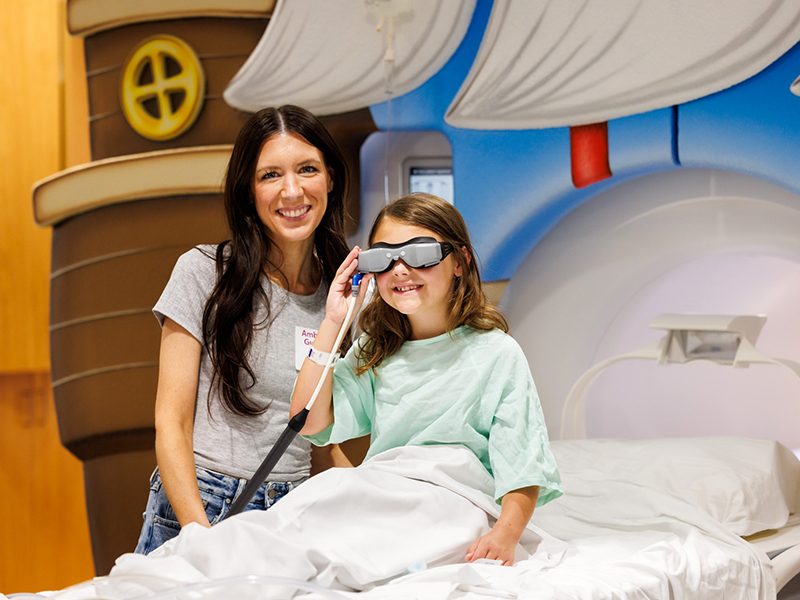Virtual reality makes MRIs easier at Children’s of Mississippi

A cardiac MRI meant that 7-year-old Everly Farris would have to hold still for more than two hours.
“We were worried about whether she’d have to be sedated to do it,” said her father, Kyle Farris of Enterprise.
She didn’t, thanks to the virtual reality headsets that help Children’s of Mississippi patients cope with lengthy imaging procedures.
The Cinemavision goggles allow a child to watch a preview of what an MRI is like and then watch a movie during an MRI.
“Children can choose to watch their favorite movie or show on Disney Plus, YouTube or listen to music on Pandora,” said Madeline Wilson, child life specialist. “The goggles allow children to only see the movie, which can be particularly helpful since seeing the MRI tunnel can be frightening to children and teens. It is a truly immersive experience that takes your mind off having an MRI and makes you feel like you are in your very own movie theater.”
The state’s only children’s hospital purchased five Kind VR goggles and one set of Cinemavision goggles through a $70,000 Child’s Play grant. The Kind VR headsets allow patients to practice being in an MRI, Wilson said.
“We had never seen anything like this,” said Everly’s mother, Brittany Farris. “We were so nervous and wondering how she would be still, but child life was so good and made such an effort to educate her on what an MRI would be like.”
Everly got to enjoy a “Star Wars” movie during her MRI, helping her to complete her MRI without being sedated.
A patient of the Children’s Heart Center at Children’s of Mississippi, Everly was diagnosed at 3 with subaortic membrane, a congenital heart condition that’s a type of subaortic stenosis.
Wilson said she’s enjoyed seeing the difference virtual reality is making for children and teens at the Children’s of Mississippi Imaging Center inside the Kathy and Joe Sanderson Tower.
“I have heard children tell me ‘My MRI was fun!’ or ‘I didn't even get to finish my whole movie!’” she said. “These goggles allow children to be more comfortable and less scared during their MRIs, which are both priceless factors. These goggles keep kids' attention and have avoided the need for sedation in some cases.”
Everly chose to wear the VR headset during her MRI because she said “it will help me be less distracted and I can focus on my movie so I can lay still,” Wilson said. “I thought her logic was so insightful, and I loved to hear her positivity. These goggles helped allow her to hold still for a 2-plus-hour-long scan. I was so incredibly proud of her and what she accomplished.”
Wilson said the VR headsets are “one of the many components that make a children's hospital a children's hospital. “These help children overcome their fears and eventually say ‘I did it!’”
“We’re so lucky to have all this available at Children’s of Mississippi,” Brittany Farris said. “We had the VR headset and an MRI that looked like a pirate ship. All of this helps children and their families feel more comfortable during care.”

